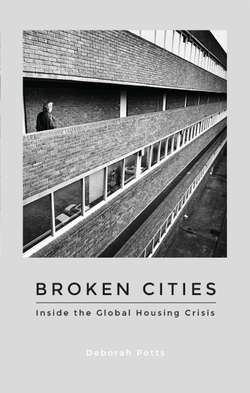Читать книгу Broken Cities - Deborah Potts - Страница 5
На сайте Литреса книга снята с продажи.
ОглавлениеContents
List of figures, tables and boxes
Foreword
1 The dilemma of affordable housing and big cities
Introduction
Five key premises
Housing processes across time and space: recognising the links
2 Mismatches between incomes and housing costs: a global condition
Introduction
Learning from southern Africa
Urban incomes and hard limits on housing expenditure
3 Affordable urban housing and the role of basic standards
Housing standards: the necessity of a double-edged sword
Informal housing and building standards
What standards are appropriate?
4 Private-sector urban housing provision: formal and informal
Formal-sector, large-scale, for-profit housing
Variations in owning versus renting in the private sector
Informal-market ‘affordable’ housing
5 Squaring the circle: social housing programmes and affordable rents
Introduction
Matching the gap between low incomes and market rents
6 Squaring the circle: affordable urban homeownership
Subsidising homeownership
‘Recognising’ informal and unplanned settlements: ‘quiet encroachment’ and homeownership
Sidestepping informality: the site-and-service approach to homeownership
Transferring public housing to homeowners
7 Global finance, big cities and unaffordable housing
Introduction
Commercialising the priorities of public housing authorities
Middle-income poaching, downward raiding, regeneration and gentrification
The subprime mortgage crisis and the 2008 financial crash: catastrophic feedback loops
8 Broken cities: unaffordable housing as the norm?
Introduction
Policy responses: handouts for the middle classes and attacks on housing subsidies for the poorest
Squaring the circle by squeezing the space
9 Broken cities, broken households: the demographic impacts of unaffordable housing
Introduction
Squaring the circle by squeezing the right to family life
10 Conclusion
Trends in global income, urban demography and ideologies: a perfect storm for housing affordability?
Appendix 1: Bloomberg Housing Affordability Index
Appendix 2: Total housing cost overburden rate among low-income households in OECD countries
Notes
Index
